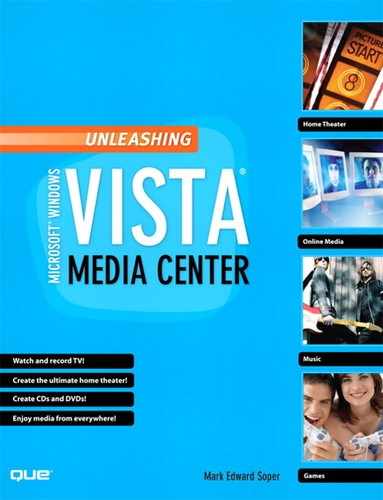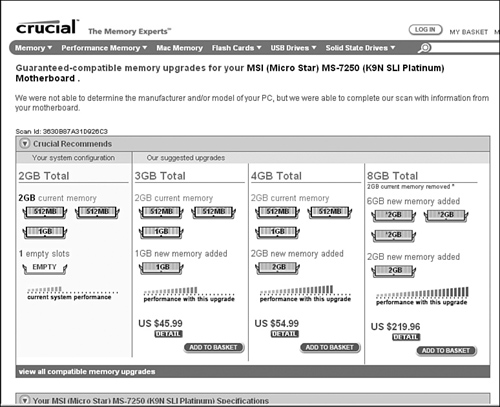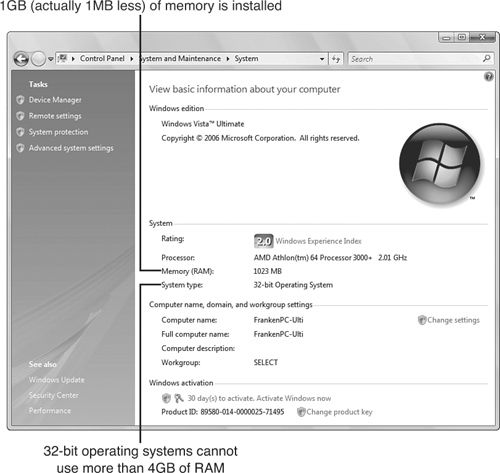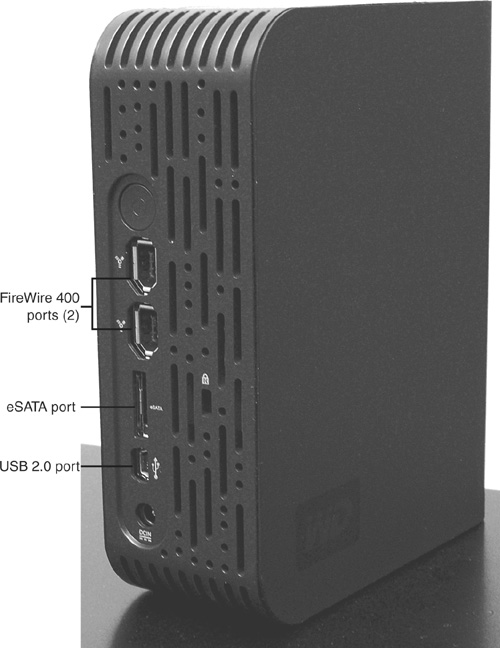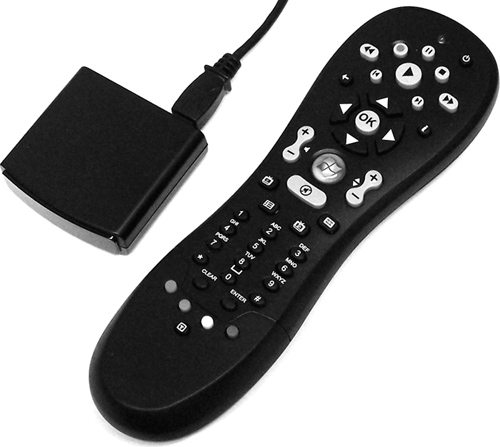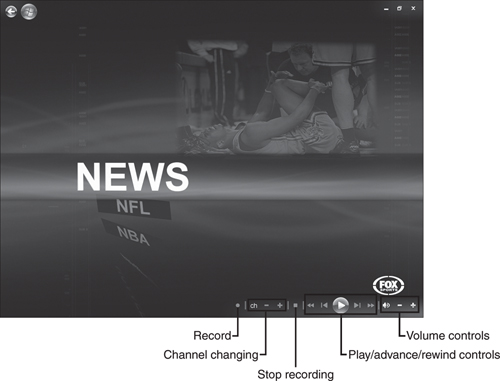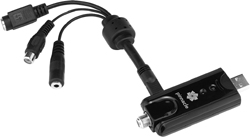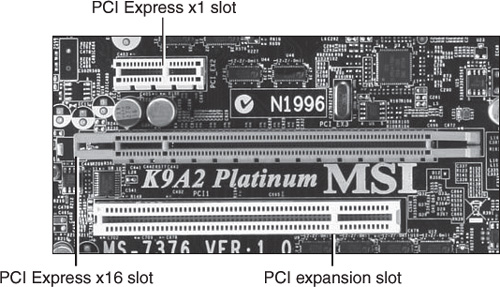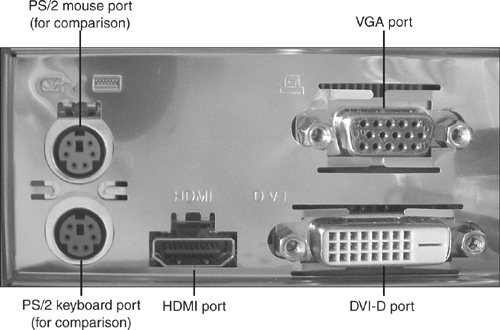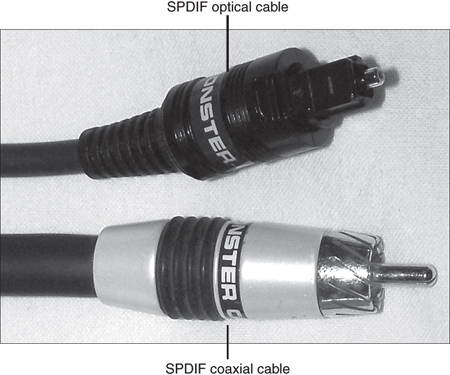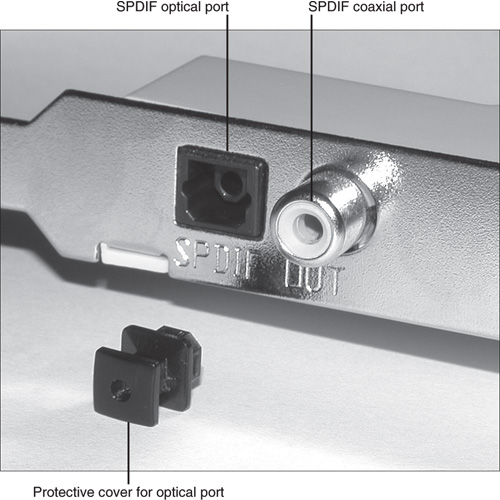The incorporation of Windows Media Center (WMC) into Windows Vista’s two most popular versions for home users, Home Premium and Ultimate, means that most Windows Vista users have the software they need to enjoy their favorite audio, video, and photo media from the comfort of their favorite couch, loveseat, or recliner. However, having WMC is only half the battle: If your computer doesn’t include the right equipment to enjoy WMC, you’ll need to upgrade it or replace it. This chapter shows you what you need to enjoy WMC’s basic features, what your PC should include if you want to enjoy specific types of media, checklists you can use to assure that you build or buy the best PC for WMC, and how to upgrade your existing PC for better functionality with WMC.
Gertrude Stein said: “Rose is a rose is a rose.” That simply isn’t true about PCs. There’s a reason that some PCs are just not suitable for Windows Vista Home Premium or Windows Vista Ultimate editions (both of which include WMC): They don’t have enough horsepower “under the hood.” So if you’re wondering if your current PC is good enough for WMC, or if you’re planning to buy, build, or upgrade your way to a WMC platform, what should you look for? The following tasks put the heaviest demands on the core components in a WMC PC:
Watching live TV (broadcast or cable)
Recording live TV (broadcast or cable)
Displaying high-resolution (5MP or greater resolution) still photos
Encoding video (to create a video DVD from digital video or still images)
If you plan to use WMC for any or all of these tasks, you will definitely want to make sure your PC has the performance needed in the following areas:
Processor
Memory (RAM) size
Hard disk size
DVD drive type
Video card or integrated video type
These are among the most expensive parts of a system to upgrade, especially if upgrading requires replacing the motherboard, as it often does on a desktop system, or switching to a brand-new laptop, as is necessary if you are not satisfied with the processor or video type of your current laptop. The following sections help you weigh your current system—or the systems on your shopping list—in the balance to see if they measure up.
However, if you will be using WMC primarily to interact with digital music or web-quality video, system performance is less important.
The processor (also called the CPU) has a big role in determining how fast your system is. Everything you do with your computer is controlled by the processor, and most information sent to (or from) your computer goes through your processor. You’re going to be happiest with the performance of WMC on local files if your computer contains one of the following processors:
Intel
Core 2 Duo, Core 2 Quad, Core i7 (fastest)
Pentium D, Pentium Dual-Core (slower, but acceptable)
AMD
Athlon 64 FX x2, Phenom (fastest)
Athlon 64 x2 (slower, but acceptable)
These processors come in many different models that feature different clock speeds (how fast the processor performs internally), external bus speeds (how fast the processor sends and retrieves information from other parts of the system), and L2 cache sizes (L2 cache stores the contents of recently read parts of main system memory, also known as RAM, for reuse). However, all models of these processors have the following common features:
All run at fast clock speeds.
All contain two or more processor cores.
All contain a large amount of L2 cache.
All support 32-bit or 64-bit operating systems.
Fast clock speeds enable the computer to perform tasks more quickly than with a slower processor of the same or similar type.
Two or more processor cores enable the processor to perform multiple tasks more quickly, such as encoding video or transferring pictures while you watch TV or a movie, or using a Media Center Extender to view WMC content on your PC while you’re using your PC for other tasks.
→ | To learn more about Media Center Extenders, see Chapter 11, “Adding and Using Media Center Extenders,” p. 315. |
L2 cache enables the computer to perform similar tasks more quickly because the processor needs to fetch the contents of main memory less often.
32-bit operating systems have memory size limits that are becoming increasingly troublesome as image and media file sizes grow larger and larger. The ability to switch in the future to a 64-bit version of Windows Vista or future operating systems helps “future-proof” your PC.
To learn how to determine the hardware in your current system, see “Scoping Out Your Hardware,” this chapter, p. 49. |
If your system has one of the processors from the following list, it’s running an older or an “economy” processor that lacks most or all of the features we’ve recommended. Keep in mind that depending on how you use WMC, it might be fine, but if you are planning to watch or record TV or encode digital video, a slow processor could be holding you back.
Intel
Celeron
Pentium 4
Pentium 4 Extreme Edition
Pentium Extreme Edition
AMD
Sempron
Athlon 64
Athlon 64 FX
Can you upgrade your processor? In the immortal words of yours truly, “It depends.” Specifically, it depends on whether you have a desktop or a notebook computer. Most desktop computers have removable processors, but whether you can move to a faster processor (preferably a dual-core, tri-core, or quad-core model) depends upon the motherboard in the computer. Generally speaking, so-called “white-box” PCs built from standard components (either by the user or by a local or online dealer) are more likely to support a wide range of replacement processors than systems built by major vendors such as Dell, HP, Gateway, or Lenovo.
A new processor must not only fit into the existing motherboard, but its features (clock speed, multi-core function, voltage requirements, and so on) must also be supported by the existing motherboard. Processor upgrades are a favorite hobby of enthusiasts (and PC repair shops), but if you’re an upgrade novice, it’s not for you. However, some other upgrades are a lot easier to perform.
In some cases, you might need to replace the motherboard and the RAM to upgrade to a better processor. In that case, it’s usually cheaper to shop for a new PC!
RAM (memory) is the workspace used by the processor to work with media and other information. If you want to make WMC work as well as possible, you’ll want no less than 2GB of RAM in your system. Many recent systems include more than 2GB RAM, and systems running 64-bit versions of Windows Vista can use more than 4GB.
How much RAM can your system use? Again, in the immortal words of yours truly, “It depends.” It depends on the design of your system, whether you’re using a 32-bit or 64-bit version of Windows Vista, and the amount of memory you already have installed. Because memory modules contain different amounts of RAM, and systems have a limited number of slots for memory modules, it might be necessary to remove low-capacity memory to install more, larger-capacity memory.
Note
To determine if you have a 32-bit or 64-version of Windows Vista installed, view the System properties sheet (refer to Figure 2.2).
There are several ways to find out how much memory your system contains and the available upgrades for your system. The easiest way is to visit a memory vendor’s website and use its memory configuration scanning program, such as Crucial.com’s Crucial System Scanner (see Figure 2.1).
If your system or motherboard is recognized by the scanner, you will find out how much memory (RAM) is already installed in your system, what upgrades fit in your system, and whether you need to remove lower-capacity modules to install higher-capacity modules.
If your system is not recognized by a memory configuration program, or if you prefer to buy memory from a vendor that does not offer an online system scanner, you can use a two-step process:
Use Windows Vista’s System properties sheet to determine how much memory your system has (see Figure 2.2).
If you need to add more memory, visit a memory vendor’s website and look up your system by brand and model number to determine possible memory upgrades. In Figure 2.3, I used the Kingston Memory Search (www.kingston.com) to look up memory upgrades for my Micro-Star (MSI) K9AG Neo2-Digital motherboard.
What if you don’t know the brand and model number of your system? If you use an off-brand or “white box” PC built from standard components, or your system is using a different motherboard from the one originally installed, you might wind up in this category.
Caution
Can you reuse memory from one system in another system? In some cases, yes. However, there’s much more to the process than seeing if the module will plug into the system. Memory chips on different modules run at different speeds and have different CAS Latency (CL) timings (CL refers to how quickly memory access changes locations in a memory module to find desired information). If you mix memory modules with different speeds and CL ratings in a system, many systems will crash or lock up, while others might run faster modules at the same speed as slower modules.
Unless you can determine that salvaged memory modules match your system’s requirements, don’t use them in your system. To try to find out if a memory module will work in your PC, check the brand and model number of the module on the vendor’s website and see if that module is listed as a recommended module for your system.
If you cannot scan your system to determine memory upgrades, visit the Belarc website (www.belarc.com) and download the free Belarc Advisor program. This program can detect an enormous amount of information about your computer, but for our purposes, the most important information is the System Model, Main Circuit Board, and Memory Modules section of the report, which appears in your web browser (see Figure 2.4). Use this information when you visit a memory vendor’s website to look up your system for memory upgrade options.
How do you plan to use WMC? If you’re planning to record live TV, create a movie library on hard disk, or store a collection of pictures from today’s high-megapixel-rated digital cameras, don’t skimp on storage.
How much storage do you need? I’m tempted to tell you, “How much can you afford?” But, you’d probably prefer some hard numbers. OK, let’s get to it.
If you’re going to be recording live TV, a three-hour TV show recorded in high quality will use about 10GB of space. Thus, for every 30 hours of TV recorded in high quality, you’ll need 100GB of space (figure less for lower-quality settings). Note that if you’re using digital TV sources (digital cable, ATSC broadcast TV, or satellite TV), you must record in high quality. HDTV takes an even bigger chunk of hard disk space: only 15.5 hours of TV per 100GB of space.
If digital photography’s your game, expect to use between 2MB and 3MB per picture if your digital camera has a 6MP (megapixel) or higher rating and you shoot JPEG photos using maximum quality (variously called “Best,” “Fine,” “Superfine,” and so on). Assuming 2.5MB per photo, you can store about 4,000 photos per 10GB or about 40,000 photos per 100GB.
However, if you’re running a digital SLR camera like a Canon Rebel XTi, Nikon D40x, and so on and you’re shooting RAW files, expect to use as much as 8–12MB per image. Assuming 9MB per file, you can store about 1,100 pictures per 10GB, or about 11,100 photos per 100GB.
If you shoot RAW+JPEG, add up the space for both file types to estimate how much disk space you need.
Note
Unfortunately, WMC doesn’t display RAW files. By shooting RAW+JPEG, or by converting RAW files to JPEG after shooting, you can view JPEG versions of your photos using WMC.
If you want to view RAW files without leaving WMC, there’s a way around the problem. By installing a Windows Vista-compatible codec from your digital camera vendor, you can view your files with Windows Photo Gallery or Windows Live Photo Gallery. And, by using a third-party program to start Windows Photo Gallery or Windows Live Photo Gallery from within WMC, you can enjoy your RAW files. For more information, see the section “Solving Codec Problems” in Chapter 16, “Troubleshooting Media Center,” p. 495.
Like digital music? The quality and format you use for ripping music has a big impact on how much disk space you’ll need for your digital music library. The highest quality you can get in digital conversion is to use a lossless conversion format, such as WAV or WMA Lossless. Because these formats do not use compression (which discards some information to reduce file size), the price you pay for lossless conversion is an enormous amount of space. For example, a 74-minute music CD takes over 700MB of disk space.
If you can afford the disk space required for lossless conversion, you can create a no-compromise digital music collection. Keep in mind, though, that if you are planning to create a digital music library that also works with portable media players, you would need to convert lossless formats into compressed formats that work with these players.
The most common compressed digital music formats include MP3 (which plays on practically any media player, including Apple’s iPod series) and Windows Media Audio (WMA), which is widely supported by most third-party media players. MP3 files are generally larger than WMA files of comparable quality. However, the bit rate used to digitize music into compressed formats also has a big impact on file size. The higher the bit rate, the larger the file size, but the better the sound quality. The differences between lower bit rate and higher bit rate music is especially apparent if you have a high-quality home theater setup, speakers, and a room with good acoustics. My bias is toward converting music with the highest bit rate possible because you can always discard detail to shrink a song to fit on a portable player, but you can never get back quality lost during initial conversion if you use a lower bit rate. To compare the relative sizes you can obtain, I ripped a 41:48 album to CD with Windows Media Player 11 (included in Windows Vista and used by WMC for ripping audio) using four different settings, two for MP3 and two for Windows Media Audio (WMA). Table 2.1 lists the different formats, bit rates, and resulting sizes.
I recommend ripping audio in MP3 format if you have (or plan to buy) an Apple iPod or aren’t sure whether you’re going to add a portable media player to your technology collection.
Let’s make the math simple. Assume each album in your collection has a duration of 41:48 (some are shorter and many are longer) and that you’re going to use MP3 audio ripping at 320Kbps. You can store about 10.4 albums per GB, about 104 albums per 10GB, or about 1,040 albums per 100GB.
If you’re planning to record a lot of TV, rip a lot of digital music, and take a lot of digital photos, you’d better figure on at least a 500GB hard disk for your desktop PC—the “sweet spot” in the hard disk cost versus capacity calculation. You’ll want to pick up an external hard disk of at least the same capacity for backups. Add 500GB internal and 500GB external, and you’re looking at one terabyte! It’s a lot of disk space, no matter how you slice it.
If you are using WMC on a laptop computer, look at a 320GB hard disk as a desirable size for heavy-duty media storage. Laptop computers use drives with smaller form factors, and these drives are more expensive per gigabyte than drives for desktop PCs.
Tip
With either desktop or laptop computers, keep in mind that you can configure Library Setup in WMC to point to external drives for storing all types of video, and you can configure TV recording to store recordings on an external drive. So if you’re trying to use an existing system for WMC and don’t want to (or can’t) upgrade the internal hard disk, external drives plugged into USB 2.0, FireWire, or eSATA ports are a suitable substitute. Of course, you can also add external hard disks to a new system to avoid running out of space.
To learn more about using Library Setup to configure other hard disks for video recording, see “Optional Setup: Music, Pictures, and Videos Library” in Chapter 3, “Setting Up Windows Media Center,” p. 74. |
If you are planning to use an external hard disk as a dedicated storage device for a single PC or a backup device for several PCs, I recommend a USB 2.0, FireWire, or eSATA hard disk based on 3.5-inch hard disk mechanisms (see Figure 2.5). You can purchase drives in this form factor with capacities as high as 1TB, and the prices of these drives are not much more per gigabyte than for internal PATA or SATA hard disks. Keep in mind that these drives require an external AC power source.
Smaller external hard disks based on 2.5-inch or 1.8-inch hard disk mechanisms can be powered from the host system’s USB port, but their price per gigabyte is much higher because of the higher cost of the hard disk mechanisms they use. These drives are often much slower than external drives based on 3.5-inch hard disk mechanisms. I recommend these smaller drives for temporary storage or transferring of large amounts of data between systems.
Beyond the core components you need for using your WMC PC for any task, consider the following tasks you might want to perform:
Want to use your WMC PC to browse the web or perform non-WMC tasks? The input devices (mouse and keyboard) are important considerations.
Planning to watch and record live TV? Depending on the TV sources you prefer, the choice of TV tuner and even whether to buy a new PC or build one are affected.
Whether you prefer digital music or surround-sound movies, the digital audio solution you choose is critical.
If you work with DV video, you need to select hardware that helps you import and edit it.
Prefer digital photography? You’ll want to make sure you can easily import your favorite pictures.
Whether you want to use your WMC PC to access digital media on other PCs, share digital media with a Media Center Extender device, or both, choosing the right network is essential.
The following sections help you choose the hardware you need to make your WMC PC work—and play—the ways you prefer.
You can use either a Media Center Remote (Figure 2.6) or a keyboard and mouse to interact with WMC. The remote has the following advantages:
Easy point-and-click operation of WMC menus
Dedicated control buttons for TV, audio, and other tasks
The wireless keyboard and mouse have the following advantages:
Easy text entry for naming albums, collections, and queues
Enables WMC PC to work with standard Windows Vista desktop, web browser and other non-WMC applications when necessary
Which is better? Why not both! My WMC PC is equipped with a Logitech 2.4GHz wireless mouse and keyboard and a Media Center Remote, and I use each as appropriate.
When you use a mouse or compatible pointing device within WMC, a mouse control center appears in the lower-right corner of the screen (Figure 2.7). When you stop moving the mouse, the control center disappears after a few seconds.
If you want to watch or record TV on your WMC, you need a TV tuner—and there are plenty to choose from. Complicating matters is the looming February 18, 2009, deadline for the changeover from analog to digital broadcast TV and the issue of encrypted HDTV cable TV content.
The choices you need to make include the following:
Which form factor? (add-on card or external)
Which bus design? (PCI, PCI-Express, CardBus, ExpressCard, or USB 2.0)
Which types of signals? (NTSC, analog cable, ATSC, digital cable, FM radio)
Which type of tuner? (hybrid or dual)
External TV tuners using USB 2.0 interfaces are the best choice if you want some flexibility with the PC you’re planning to use for WMC or if you’re wanting to watch or record TV on your laptop and don’t want to use a CardBus or ExpressCard tuner. Figure 2.8 illustrates a typical USB 2.0 TV tuner designed for use with HDTV, the Pinnacle HDPC Pro.
Note
Although the new ExpressCard slot provides laptops with PCI Express-compatible performance, don’t assume that every ExpressCard-based TV tuner is a high-performance device. ExpressCard devices are in their infancy, and as with other new product families, the first designs in the marketplace are often best left on store shelves. Check reviews carefully before you buy.
Although USB 2.0 is a good choice for standard broadcast or cable TV on a laptop, better choices exist if you are using a desktop PC. A PCI Express TV tuner card will typically provide better performance, assuming you have a recent PC with a PCI Express expansion slot. If you prefer an internal card but don’t have PCI Express (aka PCIe) slots, you can use a PCI card. Figure 2.9 compares typical PCI and PCI Express TV tuners.
Figure 2.10 compares PCI Express x1, PCI Express x16 (used for video cards), and PCI expansion slots on a typical desktop PC.
If you can use a PCI Express TV tuner, it’s your best choice for a couple of reasons:
Because PCI Express is replacing older expansion slot designs like PCI, PCI Express-based tuners usually include newer technologies, such as support for certain types of digital and HDTV signals or dual tuners to permit watching one channel while recording another.
If you’re planning to upgrade to a better PC or motherboard, a PCI Express card is easy to move to another system.
PCI Express x1 slots have about two times the performance of PCI expansion slots, so they can better handle the bandwidth required for digital and HDTV signals.
However, if your existing desktop PC lacks PCI Express slots but is otherwise suitable for use with WMC, go with an up-to-date PCI TV tuner card.
TV tuner devices designed to work with NTSC or standard cable ought to be tagged with a label “For best flavor, use by February 17, 2009.” Why? While standard cable TV is unaffected by the digital broadcast changeover scheduled for February 18, 2009, TV tuners that support only NTSC (analog) broadcast TV will become practically useless after that date unless they are connected to a digital-analog converter box. Starting February 18, 2009, all full-power broadcast TV in the U.S. will use digital signals. (Only a few repeater and low-power stations will continue to use analog signals after this date, and only until they convert to digital transmitters.)
If you’re buying or building a PC for WMC, ignore any TV tuners that do not support ATSC, the term for over-the-air (broadcast) digital SDTV and HDTV digital signals. Tuners that support ATSC also support NTSC, so even if your area doesn’t offer much in the way of ATSC TV now, you can still watch (and record) TV until the “big switch” takes place.
Note
If you’re wondering whether you can use one of the digital TV converter boxes to enable an analog-only TV tuner to view digital TV broadcasts, you’ll find the answer in Chapter 4, “Viewing and Recording Live TV.”
→ | For details, see “Using a Converter Box with an NTSC TV Tuner,” in Chapter 4, p. 99. |
If you want to watch and record cable TV, you need to know another couple of terms: QAM (also called “clear QAM”) and CableCARD.
QAM are unencrypted signals used by some cable TV providers for a few of their digital cable TV programs. Unfortunately, most digital cable TV channels on most cable TV networks are encrypted, which is why you must rent a cable box when you upgrade to digital cable. (It contains the decryption hardware needed to view the programs.)
What if you want to view all available digital cable TV on your PC, including HD and premium content like HBO, Showtime, and so on? Unfortunately, you’re no longer in the DIY category: Thanks to the cable TV industry’s fear of digital piracy, the only way you can equip a PC to view encrypted cable TV content is to buy a PC that is designed to support a feature known as OCUR (Open Cable Unidirectional Receiver) and is equipped with a digital cable TV tuner that supports OCUR.
Tip
Some vendors that sell OCUR-enabled PCs also sell the ATI TV Wonder Digital Cable Tuner separately, but it can be used only on PCs that are OCUR-ready.
To determine if your PC can use the ATI TV Wonder Digital Cable Tuner or any other OCUR-compatible TV tuner, use the OCUR BIOS Check Utility available from Doug Knox’s WMC Edition utilities page at http://www.dougknox.com/xpmce/index.htm.
Because an OCUR-ready system has a specially designed BIOS that supports the DRM features demanded by premium HDTV cable TV content providers, you cannot retrofit an OCUR tuner to a PC that does not support OCUR. Essentially, then, your choices are limited to preconfigured PCs that include OCUR support. (Some might include the tuner, or you can add it afterwards.) The first and so far only digital TV tuner with OCUR support is AMD’s ATI TV Wonder Digital Cable Tuner (Figure 2.11).
However, having an OCUR-enabled tuner is only part of the answer to viewing full-quality HDTV from encrypted sources: You also need a display that supports the HDCP standard.
→ | To learn more about HDCP, see “HDCP and Your Video Card or Integrated Video,” this chapter, p. 43, and “HDCP and Your Display,” this chapter, p. 45. |
Low-end TV tuner devices often use a hybrid design to support broadcast TV (NTSC or ATSC) and cable TV. In a hybrid design, you can watch only one channel at a time. If your TV is no more than 30 inches wide, or if you’re using a computer monitor, this might not be a major issue.
However, if you want to watch or record more than one channel at the same time (such as in picture-in-picture mode), get a TV tuner with true dual tuners. WMC can support multiple tuners, so if you’re a real TV junkie, you can have two dual-tuner TV tuner cards! Systems that include the Media Center TV Pack for Windows Vista SP1 can use more tuners (up to six tuners for Home Premium; up to twelve tuners for Ultimate edition).
Whether you’re planning to build or buy a new PC or convert an existing one for WMC, you don’t need a powerhouse graphics card (unless you’re also planning to use it for 3D gaming). However, if you want to use your WMC PC in conjunction with an HDTV, not just any video card will do.
For the very best results in HDTV viewing with WMC, look for a video card or integrated video that features a high definition multimedia interface (HDMI) or digital video interface (DVI)/HDMI port with high-bandwidth digital content protection (HDCP) support. That’s a lot of acronyms, but understanding what they mean is very important if you’re trying to assure the best video playback quality.
Note
If you are building your own Media Center PC or are upgrading an existing PC to use with WMC, make sure the video card or integrated video port is supported by Windows Vista. Check the vendor’s website to determine this information.
To determine the video card or integrated video used in your system, use MSInfo32.
→ | To learn more about MSInfo32, see “Using MSInfo32,” this chapter, p. 49. |
The DVI port (Figure 2.12) has been a normal feature of most graphics cards for the last few years but has been slow to appear on laptop computers. DVI ports support digital video, and DVI-I versions can be retrofitted with a DVI-VGA adapter to enable them to connect to CRTs and older LCD panels.
The HDMI port (also shown in Figure 2.12) is completely compatible with DVI digital signals, enabling you to use a DVI-HDMI cable to connect your DVI-equipped PC to an HDTV equipped with an HDMI port. The difference between DVI and HDMI is that HDMI can also carry digital audio signals.
If you want to enjoy Blu-Ray or other encrypted/DRM-enabled HD content at its full quality, you also need to make sure that your video card or integrated video port supports a standard called HDCP. HDCP displays Blu-Ray, the now-discontinued HD DVD and other encrypted HDTV content (such as premium HDTV channels) in full HD (up to 1080p) quality while also preventing copying of the video material. HDCP requires that the video source, digital interface, and display all support HDCP. If one or more of these devices does not support HDCP, you will see the content at a reduced quality level similar to DVD quality.
Video cards and integrated video solutions that include HDMI ports (refer to Figure 2.12) include HDCP support. What about DVI ports? Although HDMI is based on DVI, don’t assume that a particular DVI-based video card or integrated video port includes HDCP support—check the spec sheet for the video card or the chipset used by the integrated video port.
Note
You must check the spec sheet for each video card you are considering (rather than simply checking the spec sheet for the GPU used by the video card) because video cards require an additional hardware component to provide HDCP support. Although both ATI and Nvidia have claimed HDCP support in their GPUs for several years, very few video cards made before 2006 included the proper hardware support for HDCP.
Note
Although component video supports HDTV up to 1080p, component video cannot support HDCP.
You will need a third-party program to play Blu-Ray or HD DVD movies in WMC. See the section “Watching Blu-Ray Movies in WMC,” in Chapter 5, “Watching and Recording Movies,” p. 162.
If you want to use WMC to view HDTV sources, it’s time to leave behind 1280×1024 and lower-resolution CRT and LCD displays or standard TVs and connect your PC or Media Center Extender to an HDTV, HD-quality projector or flat-panel display that supports HDTV. Your digital photos and high-quality video sources look much better in HD than in standard resolutions.
Note
If you want to display 720p HDTV on a computer monitor, you need a display with a native resolution of at least 1366×768. To display 1080p HDTV on a computer monitor, you need a display with a native resolution of at least 1920×1200.
If you want to use your WMC PC to display encrypted HD video sources, make sure your display supports HDCP. HDTVs with HDMI ports support HDCP, as do many (but not all) 22-inch and larger widescreen LCP displays with DVI ports. Before you buy, check the display’s spec sheet to determine HDCP support.
If you use a desktop PC for WMC, you might not need to add anything to your PC to have surround sound support. Many recent desktop PCs include support for 5.1 or 7.1 surround audio as part of their integrated audio. However, if you are planning to connect your PC to a home theater system, you will want to make sure that your PC has a digital audio output (also known as an SPDIF port). Some use a coaxial SPDIF output, while others use an optical SPDIF output. Figures 2.13 and 2.14 compare these ports and cables.
Caution
Before you buy a replacement sound card or USB audio device, make sure you really need one. In some cases, your system or motherboard might have provision for an SPDIF port on a daughtercard or card bracket (like the one shown in Figure 2.14) that was not supplied with the system. (If you built your own system, you might not have installed it, so check your motherboard box.) Check with the system or motherboard vendor for details and to purchase the appropriate accessory if it’s available for your system.
If you decide that your onboard sound will not connect to a home theater system, make sure the sound card or USB device supports Windows Vista and provides 5.1 or 7.1 digital surround audio. Although Windows Vista has been available since early 2007, many sound card and device vendors have been slow to roll out Vista drivers or provide stereo-only output on Windows Vista.
To improve stability and reliability, Windows Vista has a completely different audio subsystem than earlier versions of Windows, meaning that you must have native Vista drivers for your sound card or USB device. Check user reviews and check the vendor’s website for Vista drivers before buying a replacement sound card or USB device.
If your onboard audio has multiple mini-jack ports designed for surround audio but does not have either type of SPDIF port, you can use computer speakers to achieve surround audio. However, if you want to connect your PC to a home theater system, you can replace your onboard audio with a sound card or external USB device that has an SPDIF port.
If you bought a PC designed for use with WMC, you might already have the ports and connections you need to easily import digital video and photos. However, you can also purchase the components you need to upgrade an existing PC for WMC or to build a PC for WMC use.
If you want to use your WMC PC to import video directly from a DV camcorder, you’ll need a FireWire port (also known as an IEEE-1394 or i.Link port). Figure 2.15 illustrates these ports. Some motherboards include either a six-wire or four-wire FireWire port, but in many cases, you’ll need to add a FireWire card to your system.
You can import digital photos from your camera through its USB interface cable, but it’s a clumsy method that also runs down your camera’s batteries. Instead, I recommend using a card reader. Card readers are often included in desktop or laptop computers and photo printers.
Caution
Although many laptops made for WMC include integrated card readers, these card readers do not support Compact Flash. (Despite the name, CF is the largest flash memory card form factor in common use.)
If you are using a digital camera that uses Secure Digital (SD) flash cards, also note that the new SDHC cards (capacities of 4GB and above) cannot be read by card readers designed only for SD cards.
Thus, you might need to add a card reader to some systems that already have an onboard card reader.
Note
Before you buy an internal card reader, check to see how it connects to your computer. Some use a nine-pin connector that plugs into an unused USB 2.0 port header on your motherboard, while others must be plugged into a USB 2.0 port on the rear of the system.
If you need to add a card reader to your PC, you can plug it into a USB 2.0 port. However, the most elegant solution for a desktop PC is to use a card reader that slides into a drive bay (Figure 2.16).
If you didn’t build your PC, or if it’s been upgraded from time to time, you might not know the exact details of the processor type and speed, memory size, hard disk size, and other details. Depending on the amount of information you need about your system, there are a variety of ways to find these things out.
You might not need anything other than Windows itself to learn what you need to know about your system. With either Windows XP or Windows Vista, you can use the msinfo32 program to display a lot of hardware information (Figure 2.17).
MSInfo32’s System Summary Screen displays the essential information needed to answer the following questions:
How much physical RAM (memory) is installed?
How large is the hard disk?
How much hard disk space is available?
The online system scanners discussed earlier in this chapter can be used to determine current memory size and available upgrades, and the Belarc Advisor displays other system information.
→ | For details, see “RAM-a-Rama: Bigger Is Better!,” this chapter, p. 24. |
Whether you want to build or buy a new Media Center PC (or upgrade an existing PC for WMC), use the following checklist (Table 2.2) to make sure you get the features you need.
Table 2.2. Hardware Feature Checklist
Task | Category | Recommended Hardware | Notes |
|---|---|---|---|
General WMC operation | Processor | Intel Core 2 Duo or Quad; AMD Athlon 64×2; Turion 64×2; Phenom | Upgrading the processor might also require replacing the existing motherboard and memory. |
General WMC operation | RAM | 2GB or more | Use up to 4GB with 32-bit versions of Vista; up to 8GB or more with 64-bit versions of Vista. |
General WMC operation | Hard disk | 500GB or larger (desktop); 320GB or larger (notebook) if you are planning to record live TV or work with digital video; 320GB or larger (desktop) or 250GB or larger (notebook) for digital music and photos only | Check system specifications to determine hard disk types supported; can be added externally. |
General WMC operation | Wireless mouse and keyboard | 2.4GHz RF or Bluetooth | Avoid 27MHz RF or all types of IR (infrared) devices. |
Recording Live TV | TV tuner | ATSC, NTSC*, and ClearQAM or OCUR (CableCard) tuner | OCUR (CableCard) tuners are available only in new PCs made to support OCUR; the tuner might be bundled with the PC or be available as an extra-cost option. |
Watching TV, video, using WMC user interface, Vista desktop | Video card or integrated video port | DirectX 9 or greater support with native Vista (WDDM) drivers | Look for HDMI support for direct connection to HDTVs; look for HDCP support to view Blu-Ray and encrypted premium HD cable channels in full quality. |
HDTV or display | 720p or 1080p HDTV or monitor supporting 720p or 1080p resolutions | Look for multiple HDMI connectors on HDTVs to enable various components to connect to TV; avoid old HDTVs that use component video instead of HDMI. (Component video doesn't support HDCP.) | |
Watching TV, video; listening to digital music | Sound card or onboard audio | 5.1 or 7.1 surround sound; SPDIF port for connection to home theater system | 7.1 surround sound is also known as Azalia or HD Audio; make sure the SPDIF port on the PC matches an available SPDIF port on the home theater system. |
Importing digital video | I/O port | FireWire 400 or 800 port | Use adapter with FireWire 800 bilingual port to connect to a FireWire 400 device. |
Importing digital photos | I/O port or device | USB 2.0 port | For direct connection to a camera via its USB 2.0 port and cable. |
Card Reader | Might be incorporated into photo printer or PC; verify that card reader works with current media type used in camera and displays drive letters in Windows Explorer. |
